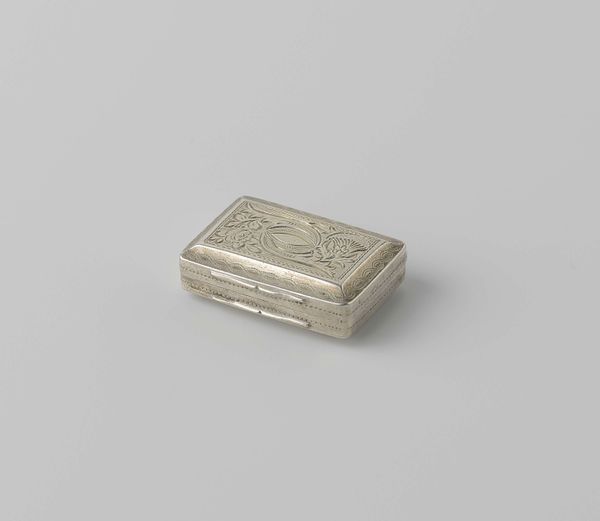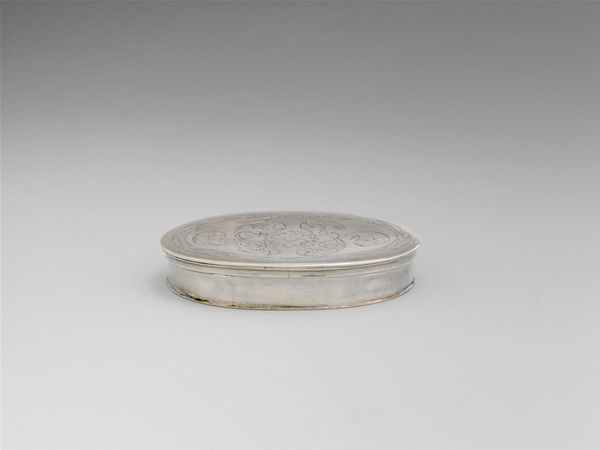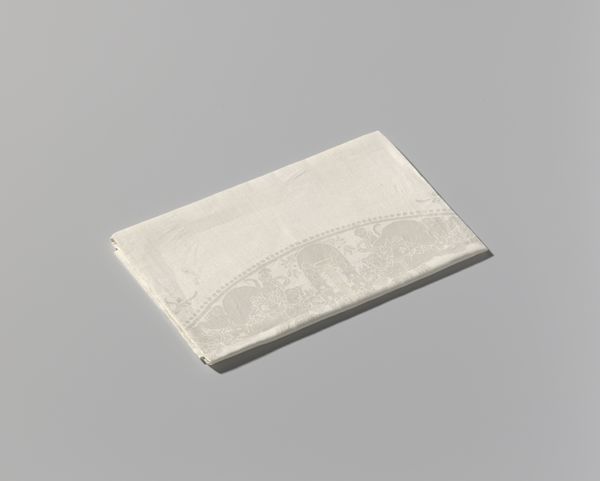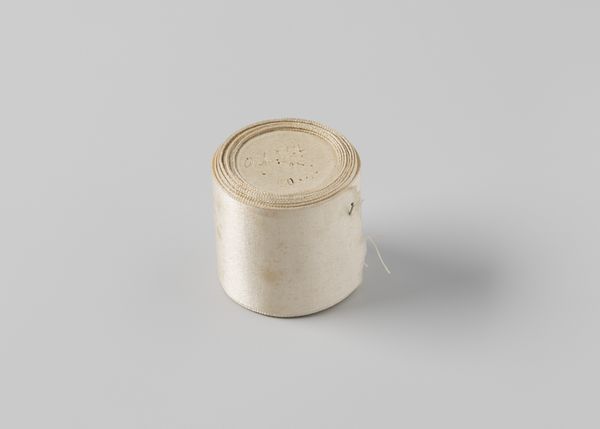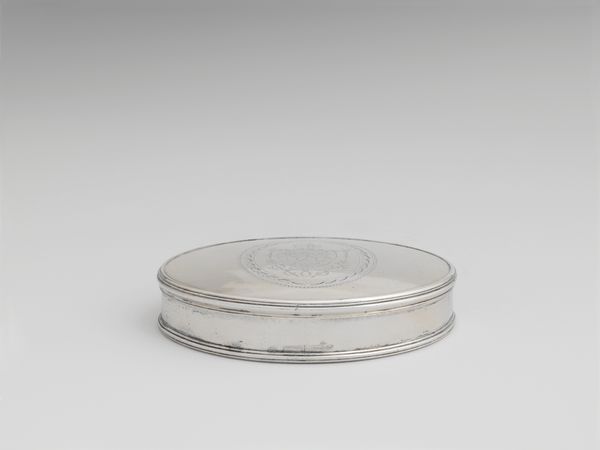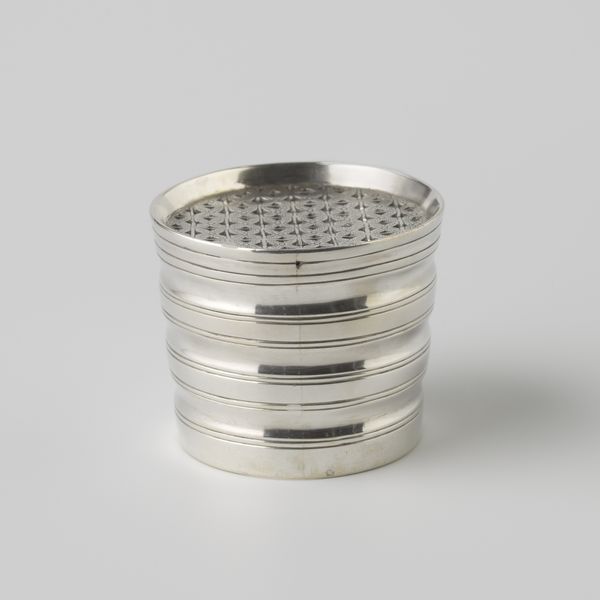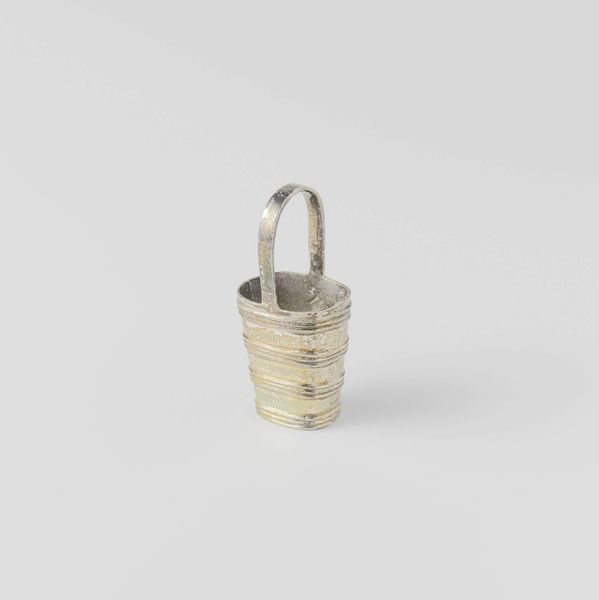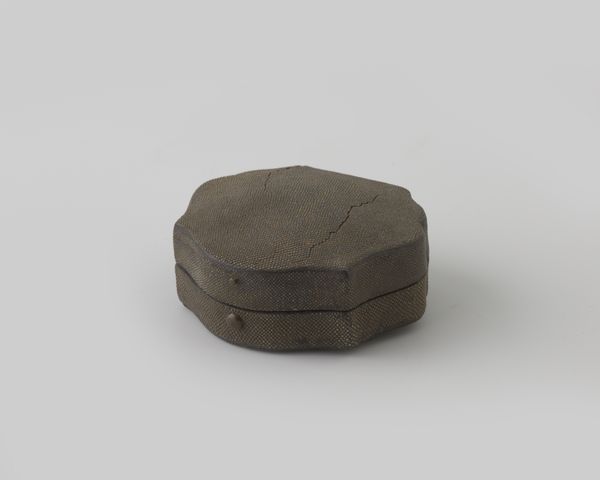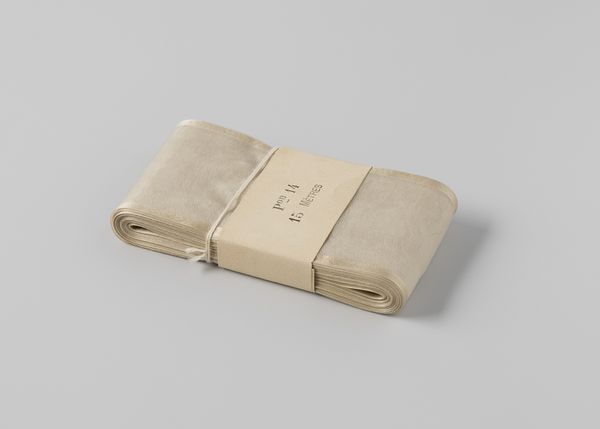
silver, metal
#
portrait
#
clear graphic shape
#
3d model
#
silver
#
3d printed part
#
rounded shape
#
metal
#
plastic material rendering
#
virtual 3d design
#
round design
#
3d shape
#
metallic object render
#
decorative-art
#
product render
Dimensions: height 0.7 cm, length 2.2 cm, width 1.6 cm, weight 7.0 gr
Copyright: Rijks Museum: Open Domain
Curator: This silver vinaigrette holder dates back to 1814, created by Joseph Taylor. It’s quite small, almost pocket-sized. Editor: My first impression is of a well-worn but cherished object. The brushed silver texture catches the light, and I notice how incredibly tactile it appears. Curator: Vinaigrette holders, you know, were these tiny containers, often made of precious metals like silver, that people—particularly women—would use to carry a sponge soaked in vinegar or aromatic oils. It was a method of warding off unpleasant odors or illnesses in increasingly urban environments. Think of it as an early form of personal air freshener or maybe even germ protection. Editor: Yes, and considering that era, early 19th century, it speaks volumes about the intersection of gender, class, and health. Access to such items was definitely a privilege, a statement about one's status but also about the ability to navigate a world that was becoming increasingly polluted and disease-ridden. We must think, who produced the silver itself and under what labour conditions. Curator: Absolutely, and if we look at the craftsmanship, we can see how silver smithing was a highly skilled trade, often passed down through generations. This particular piece is relatively simple in its design compared to some of the ornate vinaigrette holders that exist. We might explore what was considered "high art" versus "craft" and how those lines were drawn. What does its minimalist form convey about available materials or labor processes? Editor: I think you’re spot on! It compels me to also consider the larger narrative of the time. This vinaigrette is created in a Europe deep in war, but with growing technologies. How does a simple object like this become enmeshed within the larger web of power and resistance that characterized that era? Whose stories are erased by focusing solely on aesthetics and technique, though that provides the object its intrinsic qualities? Curator: Interesting point. So what stories do you want to focus on? Is it an examination of supply lines and how it was procured or should it focus solely on societal and gender divides? Editor: No easy answer but focusing on labor, consumption, health, access… each of those frames an element that we all deal with even today! It demonstrates the objects connection through the decades. Curator: Indeed. It's really quite captivating to realize that such a small, seemingly unassuming item holds within it so many reflections on material and lived experience. Editor: Agreed, it proves that the everyday objects we study can speak volumes.
Comments
No comments
Be the first to comment and join the conversation on the ultimate creative platform.
